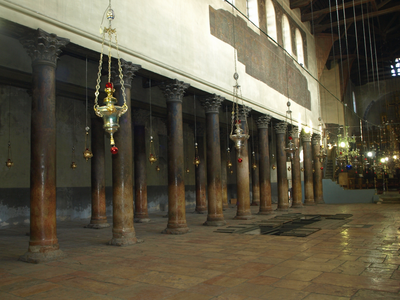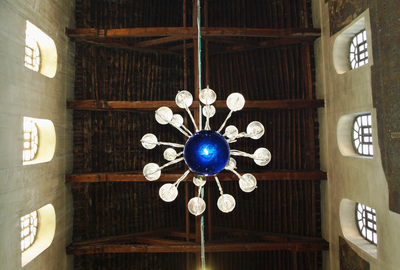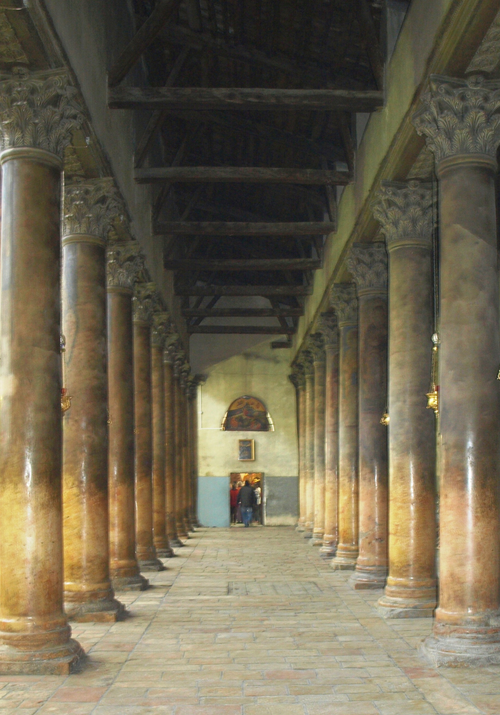'Maintenance Planning Over Millennia' or ‘How To Cash In A Forest’
Monday, 15 March 2010By Nick Goddard
New College, Oxford was founded in 1379 and, notwithstanding its name, is among the oldest of the Oxford colleges. Like many Oxbridge colleges, it boasts a great dining hall with a magnificent oak-beamed roof. In 2007, Stewart Brand posted on the Long Now Blog the following story about New College attributed to the anthropologist/philosopher Gregory Bateson.
About 100 years ago the college authorities found that the 500 year old roof beams were infested with beetles and needed replacing. They called in the College Forester and asked this worthy if there were any suitable oak trees on the rather extensive college-owned lands. His reply is supposed to have been “well sirs, we was wondering when you’d be asking.” Upon further inquiry it was discovered that when the college was founded, a grove of oaks had been planted specifically to replace the beams in the dining hall when this eventually became necessary. Successive generations of foresters had passed on the knowledge that one day the college would come knocking for wood.
On closer enquiry it appears that there may have been an element of poetic licence in the telling of this story. It was normal practice for mediaeval foresters to plant oaks alongside the faster growing hazel and ash and to accept that it would be a hundred years or more before the oaks would be harvested for use not only in roof beams but also in ship-building. No doubt it was easier to justify planting oaks to an institution like New College with long term horizons than to an owner seeking to turn a quick buck (four-footed or otherwise) on his land.
Nor would this idea of long term forward planning be unique – at different periods in English history the government has, I believe, encouraged the planting of yew trees for bows and oak trees for ships. Interestingly, in both these other examples the requirement for the wood disappeared due to technical obsolescence long before the trees were ready to harvest. Only in the case of oak roof beams would planning over this time horizon have been vindicated.
Returning to the roof at New College, it seems that there was no single clump of trees designated for the replacement beams. In fact, the trees from which the oak used to rebuild the hall was eventually harvested had grown on land that was not acquired by the college until 1441, nearly sixty years after the hall was originally built. What’s more, the roof of the hall had already rebuilt once before, in 1786. On this occasion pitch pine timbers had been used, presumably because large oak timber was either unavailable or prohibitively expensive.
When Michael Mainelli referred to the above story at the Gresham College Long Finance conference on 1 February 2010 it reminded me of another example I had encountered of long term roof maintenance planning. Almost exactly a year previously I had stood in the Church of the Nativity at Bethlehem and photographed another oak roof, considerably more ancient than that at New College. Some of the pictures I took are shown below.
The Church of the Nativity in Manger Square is one of the oldest continuously operating churches in the world. It is built over a cave which early tradition identified as the site of the ‘stable’ in which Jesus was born. The first basilica on this site was begun by Queen Helena, the mother of the Emperor Constantine under whom Christianity first became the recognised religion of the Roman Empire.
Helena visited the Holy Land in search of the locations mentioned in the Biblical accounts and was shown the cave at Bethlehem. Construction of a basilica over the cave started in 327 and was completed in 333. This first structure was burnt down during the Samaritan Revolt of 529. The current basilica was rebuilt in its present form in 565 by Justinian I, the Byzantine Emperor also responsible for the Aya Sophia church in Constantinople (Istanbul). The central structure of this sixth century building is still standing largely unchanged, including the rows of well preserved Corinthian columns shown in the photos.


About one hundred years after Justinian rebuilt the basilica Sophronius, Patriarch of Jerusalem, wrote the following lines inspired by a visit:
Gazing at the numerous pillars
Gleaming with gold, a work
Decorated with marvelous art,
I would dispel the clouds of care.
I would gaze at the coffered ceiling
With its brilliant stars of gold:
From these marvels of works of art
The grace of the heavens shines forth.

So here we have another inspiring ceiling, but this time built 800 years earlier than New College at Oxford and probably originally using cedar wood from Lebanon for the beams. Over the more than 14 centuries that the church has been used the roof timbers have been replaced many times. Perhaps the most notable occasion was in 1480, when Edward IV of England supplied the lead, his sister, the Duchess of Burgundy, provided oak beams and Venice provided the craftsmen. The most recent replacement was in the 19th century. It would appear that each renovation replaced only those timbers which were badly decayed and that some of the 1480 vintage English oak beams are still in place.
It is an interesting question how to plan and finance the maintenance of a building such as the Church of the Nativity. English parish churches have quinquennial reviews at which long term maintenance needs are identified, allowing planning and financing over a timetable lasting small numbers of decades. In the case of an ancient building such as the Church of the Nativity, the need is for an extensive renovation every five centuries or so. In the past, the church has relied on the piety of rich monarchs to provide the necessary funding rather than an endowment.
For two millennia this has worked after a fashion, suggesting that ideas and ideals are more enduring than trust funds. However, it will be interesting to see if Christian piety provides the requisite funds the next time the Church of the Nativity needs an entirely new roof. This will, in relative terms, be quite soon. In 2008 it was placed on the Watch List of the 100 Most Endangered Sites by the World Monuments Fund. Many roof timbers are rotting. The rainwater that seeps into the building not only accelerates the rotting of the wood but also does further damage to the 12th-century wall mosaics and paintings.
Three bodies share custodianship of the Church of the Nativity; the Greek Orthodox Church, the Armenian Orthodox Church and the Franciscan order. None has large amounts of disposable capital, and they are often at loggerheads, stemming ultimately from their different interpretations of the basic beliefs which led to the Church being built in the first place. 530 years after the largesse of Edward IV, it may be that the planks of a new long term funding strategy need to be put in place before the beams of another new roof.